2022 BMW R18 Transcontinental and R18 B Review
By Rennie Scaysbrook, Photography by Kevin Wing
The first time you lay eyes on a BMW R 18 Transcontinental First Edition, you have to take a step back just to breathe it all in. This is the largest twin-cylinder motorcycle BMW has ever produced, in every sense of the word.
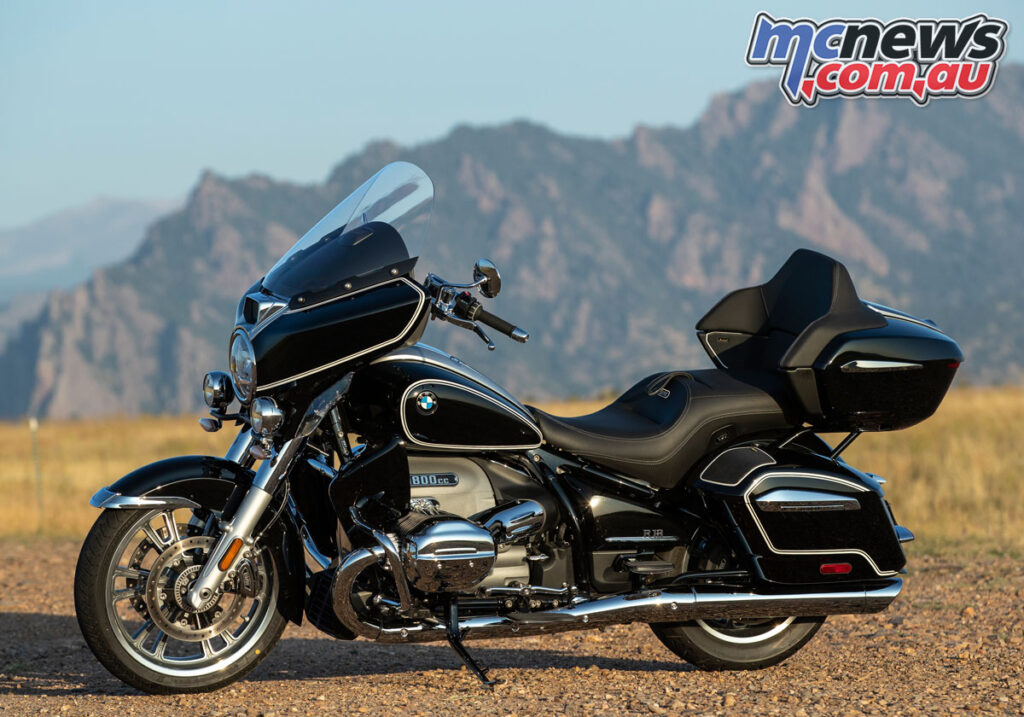
Weighing a claimed 427 kg with a full 24-litre tank of fuel, the Transcontinental is nothing but imposing. Its luxurious bodywork adorned with chrome accents and a flat-twin motor that wouldn’t be out of place in an art gallery.
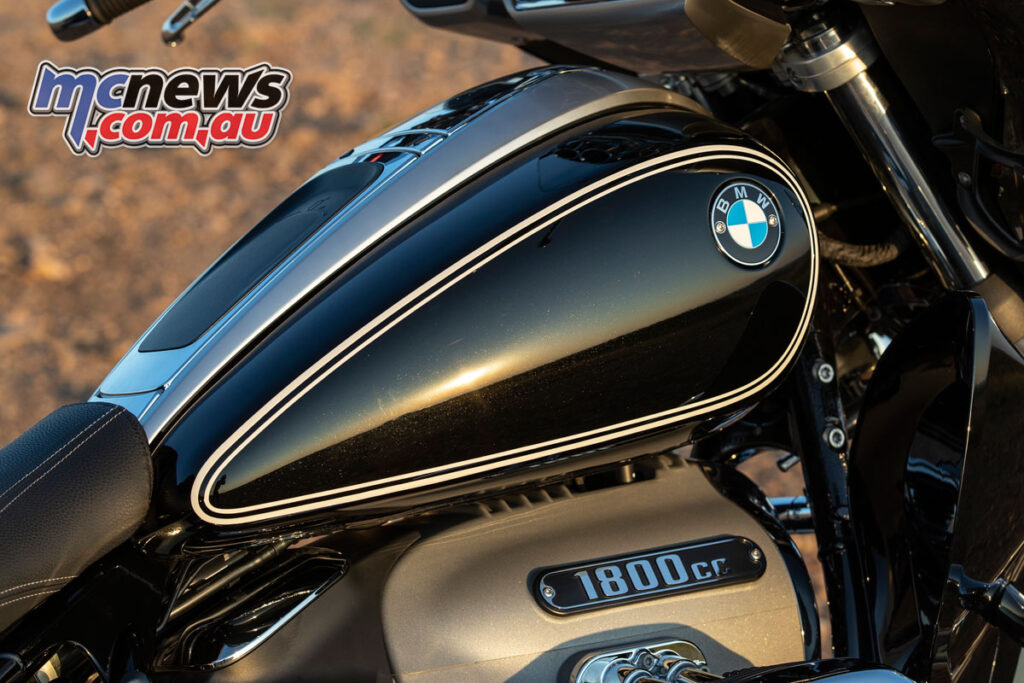
Then you glance at the R 18 B next to it. Paired back in that classic bobber style, it weighs (only) a claimed 398 kg ready to ride. It’s wholly more inviting than the Transcontinental, which has an air of exclusivity about it more akin to a fancy nightclub than a motorcycle.
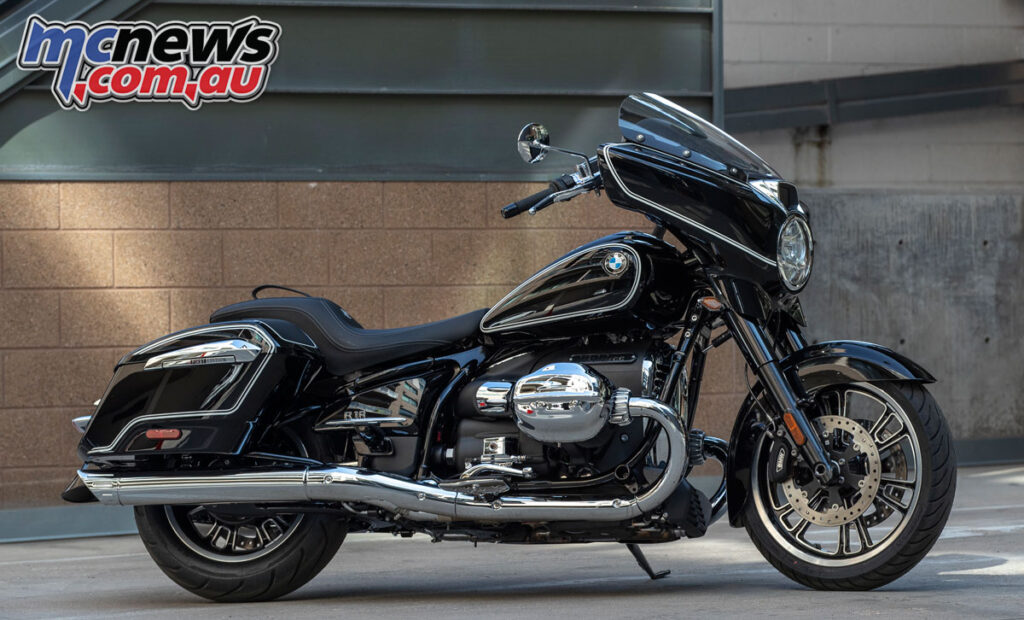
The weight difference comes solely down to the extra bodywork and trimmings fitted to the Transcontinental. While both bikes get twin 27-litre side cases, the Trans gets an extra 48-litre top case that’ll fit two helmets and a backpack depending on your stacking skills.
There’s also a much larger screen, that’s unforgivingly non-adjustable, and the fog lights that come with it, but aside from those differences, the two bikes are mechanically identical.
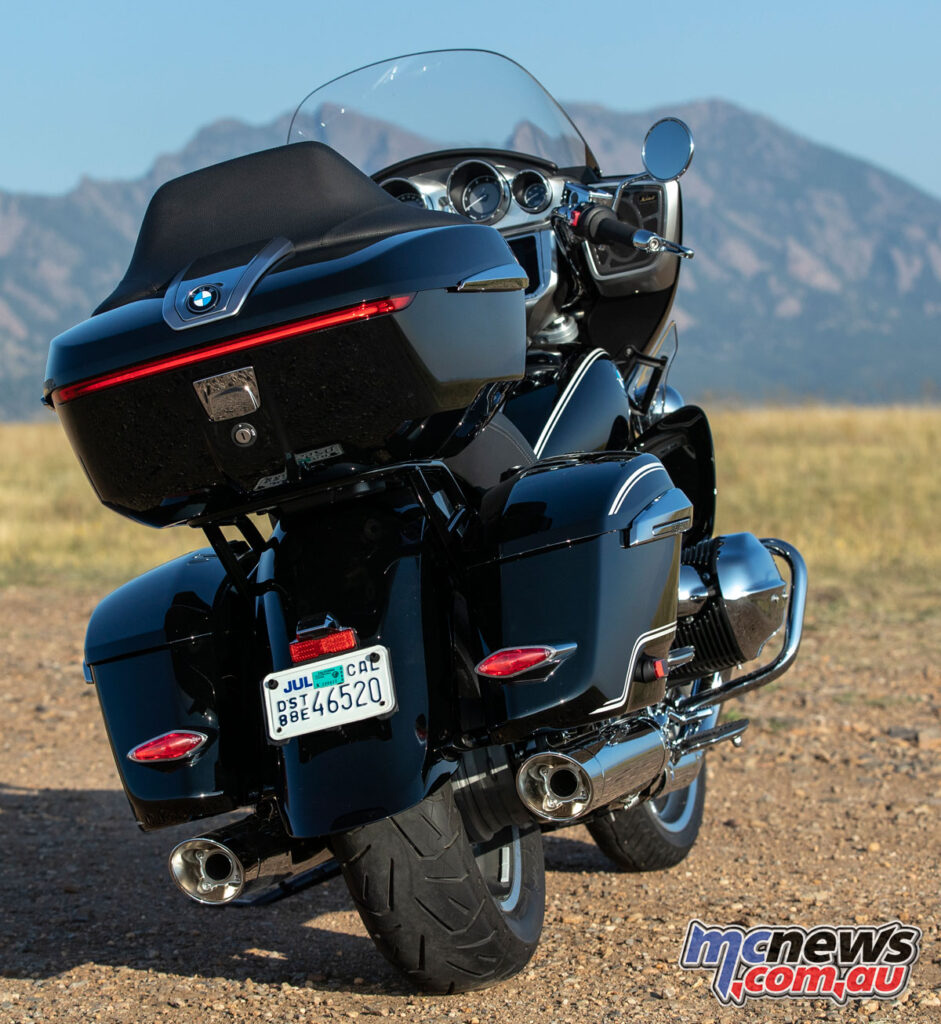
Powering them is the same 1802 cc flat-twin we saw debuted last year with the arrival of the R 18 First Edition and the R 18 Classic. That motor alone weighs a hefty 110 kg, giving you a hint of what’s in store when you eventually thumb the starter switch.
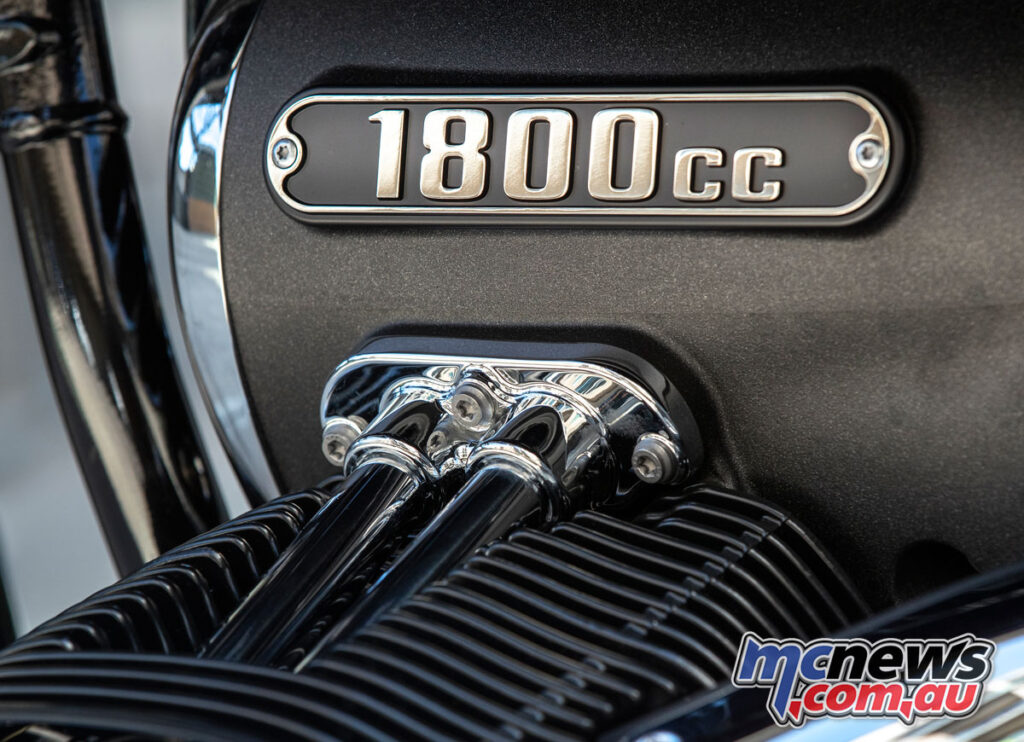
BMW claim a mere 91 hp/67 kW for each of the R 18s on test, although that is offset somewhat by the 116 lb-ft/158 Nm of claimed torque. In practice, the motor feels a little anaemic for such a massive motorcycle.
Not helping matters was the elevation of 1670 metres to our ride destination of the Stanley Hotel in Colorado, USA (yes, that Stanley Hotel where Jack Nicholson played his career-defining role in The Shining), meant we did not experience ideal conditions to let the motor shine. It made our destination a curious choice by BMW.
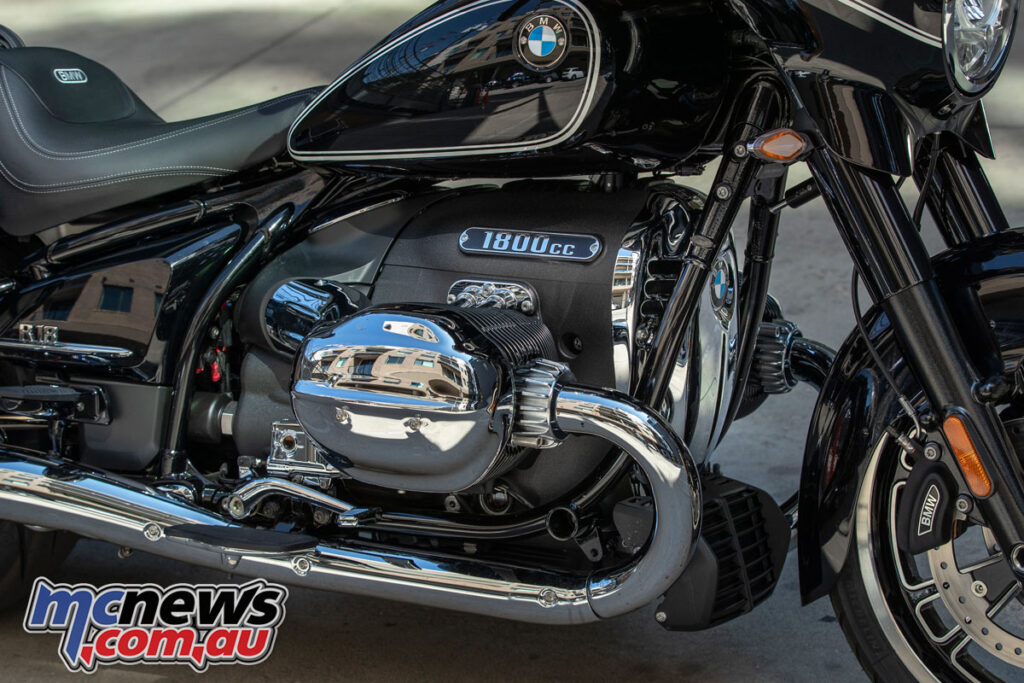
Five gears and a sixth gear purely for overdrive sit inside the gigantic gearbox. Mitigated by a single disc dry clutch, this was the cause of more than a few frustrating issues on our ride. We suffered some clutch slipping issues on our Transcontinental test bike meant acceleration was neutered in the lower gears – right when you need everything the motor had. Perhaps it had some suffered some abuse before we got our hands on it, but we can only report what we find. Earlier R 18 models had suffered some clutch issues which BMW said were fixed with a mapping change. This was not the case for several journalists on this launch, so I’m not too sure BMW has completely cured the problem.
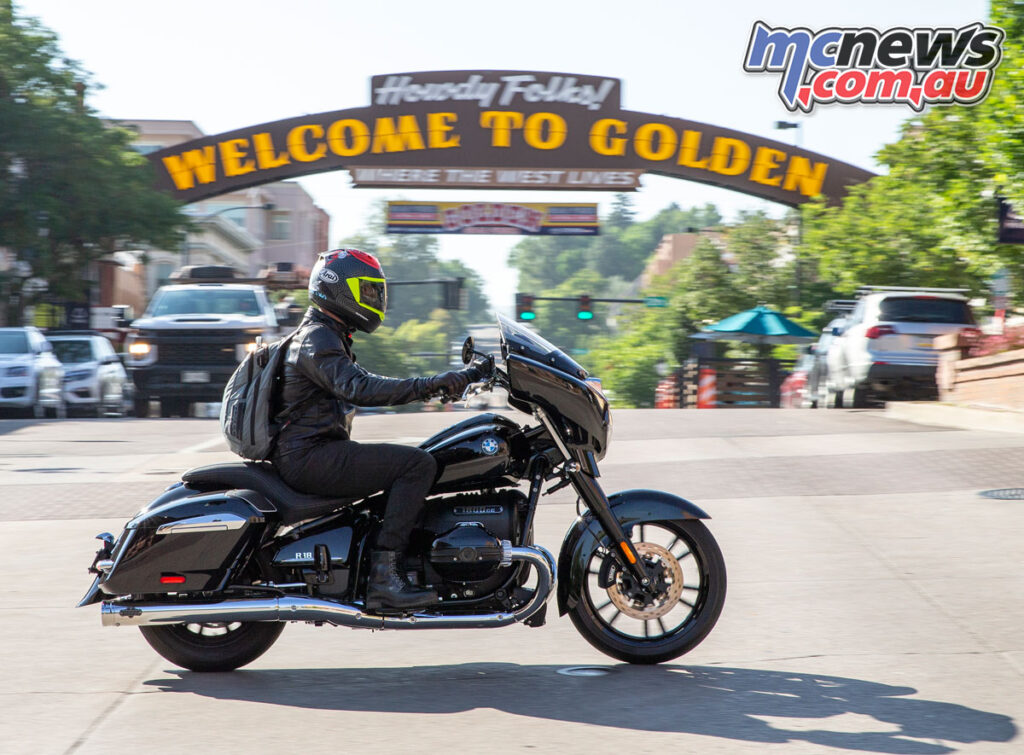
You’ve got three riding modes in Rain, Roll and Rock to choose from, although, truth be told, you only really need the more direct Rock mode. The revs are gained quite quickly, so if you’re not careful you’ll rip past the 3000 rpm peak torque point and the 4750 rpm torque point faster than you’d expect. For such a massive machine, it really could do with some more ponies.
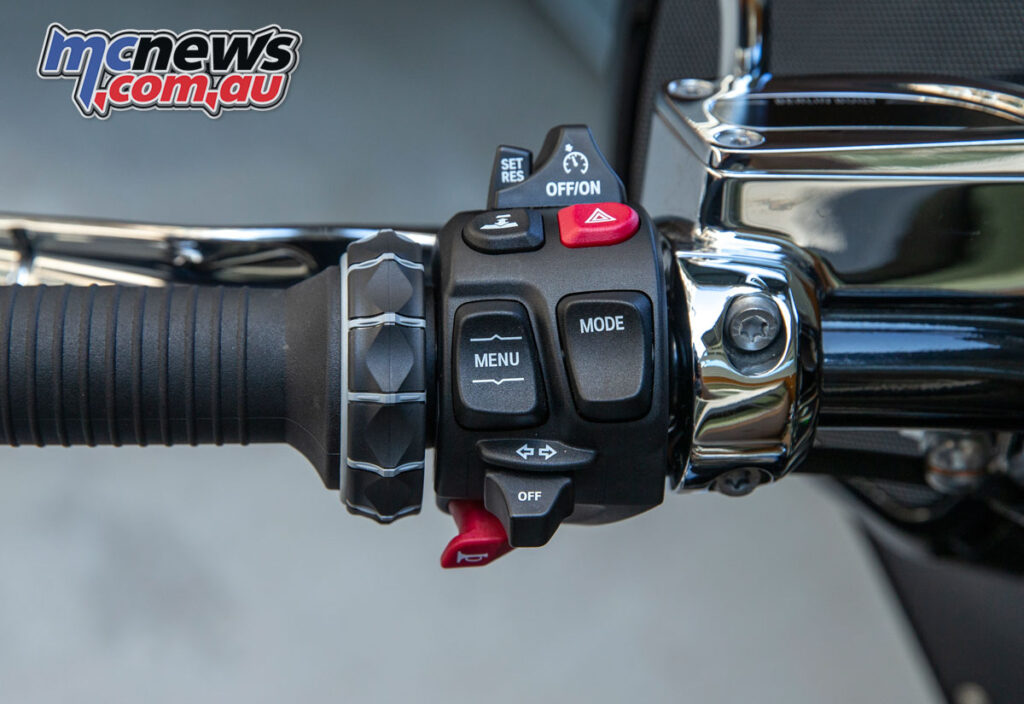
BMW has fitted radar-assisted Active Cruise Control to the R 18 Transcontinental and the R 18 B, and it’s a system that works almost flawlessly. Almost. There’s three options of distance to the vehicle in front you can select along with cruising speed – if you’ve never used ACC on a bike before, it takes a leap of faith as having a bike slow down and accelerate beneath you is a strange sensation indeed.
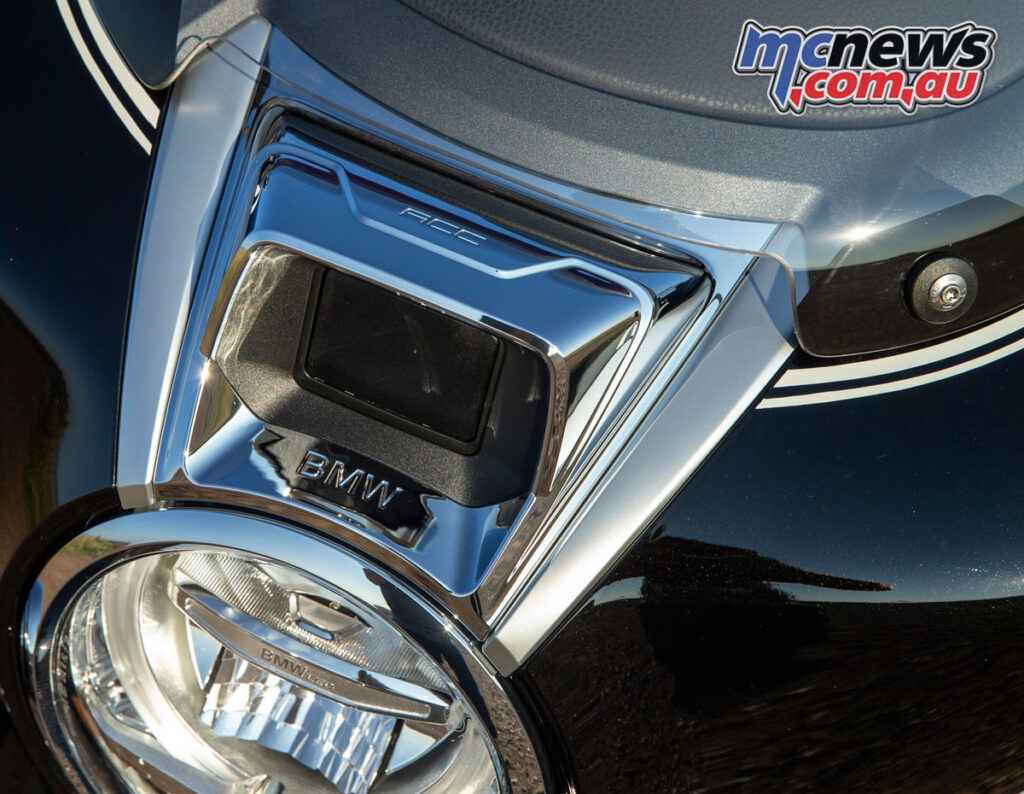
Setting my distance to the middle level was ideal for me, but the system sometimes did not detect the bike in front of me and thus had me accelerating and closing the gap way faster than I wanted. Cars were recognised by the system however, no worries. So not quite flawless, yet.
The riding modes and more are accessed through what can only be described as the most extravagant dash on any production motorcycle, with four chrome-cast analogue clocks – one for revs, one for speed, one for fuel and a fairly useless available engine power gauge on the right.
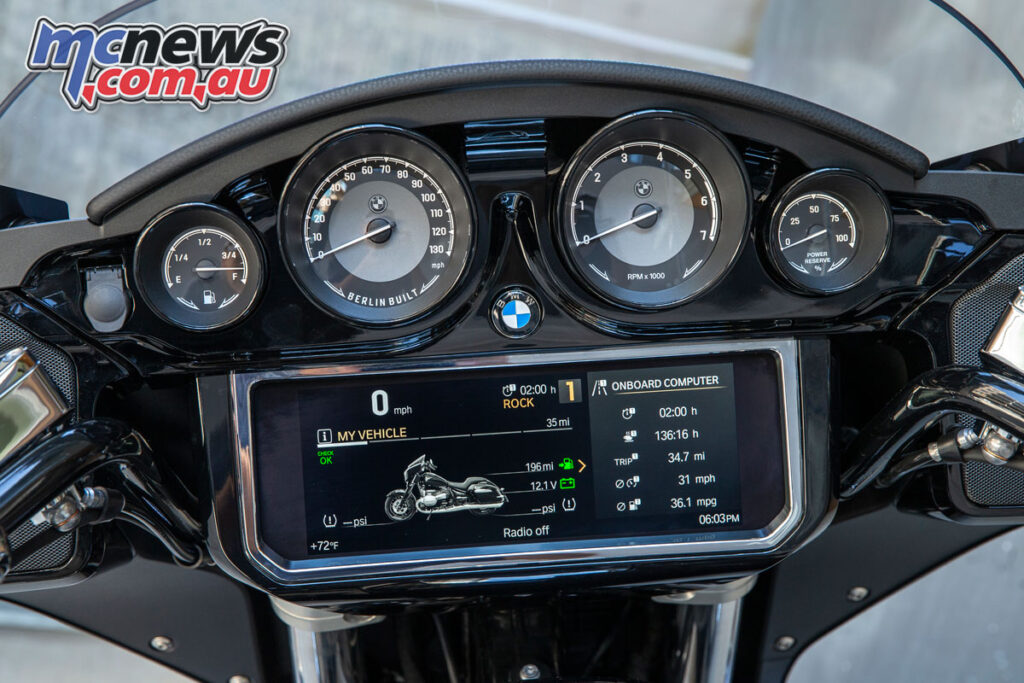
When you’re cruising the freeway with minimal throttle input, the gauge needle will sit near the 90 hp mark. Crack the throttle and the needle dives to nearly zero, indicating you’ve used the full whack of engine power. I don’t know, give me a nice clock made by Breitling or Tag Heuer. I might look at it more than once.
These gauges sit above a massive 10.25-inch/260 mm digital display, where you’ll find all the usual stuff for your trips and access to the optional Marshall Marshall Gold Series Audio sound system. Although not as loud as what you can find on some Harley models, the sound is crisp enough to hear over wind noise and plenty loud enough that everyone will experience your terrible taste in music as you glide by.
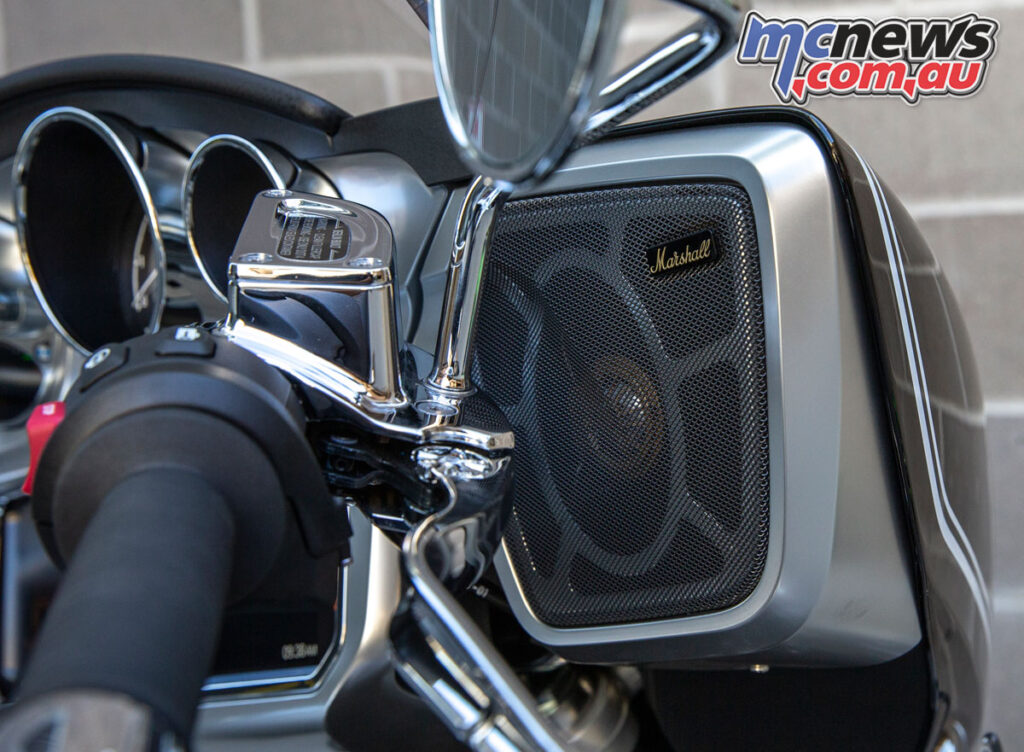
We were asked by BMW not to pair our phones as we had two machines to test – for fear of our phones syncing to our old bike when we switched. It seemed a strange request, which later bore more suspicion when, after all the journalists paired their phones anyway, we realised that using the navigation and music was annoyingly difficult.
Using Spotify was a pain, as you would have to manually play one song after the other, rather than letting it just play through. The only way the system seemed to work was when you played songs directly off your phone on a playlist you’d previously set up.
I only had a couple of tracks on my phone, so after listening to the same song over and over, I turned the system off. The system’s sound still isn’t as good as a decent Bluetooth headset and speakers, anyway. Although I am sure software updates will cure most of the ills we experienced.
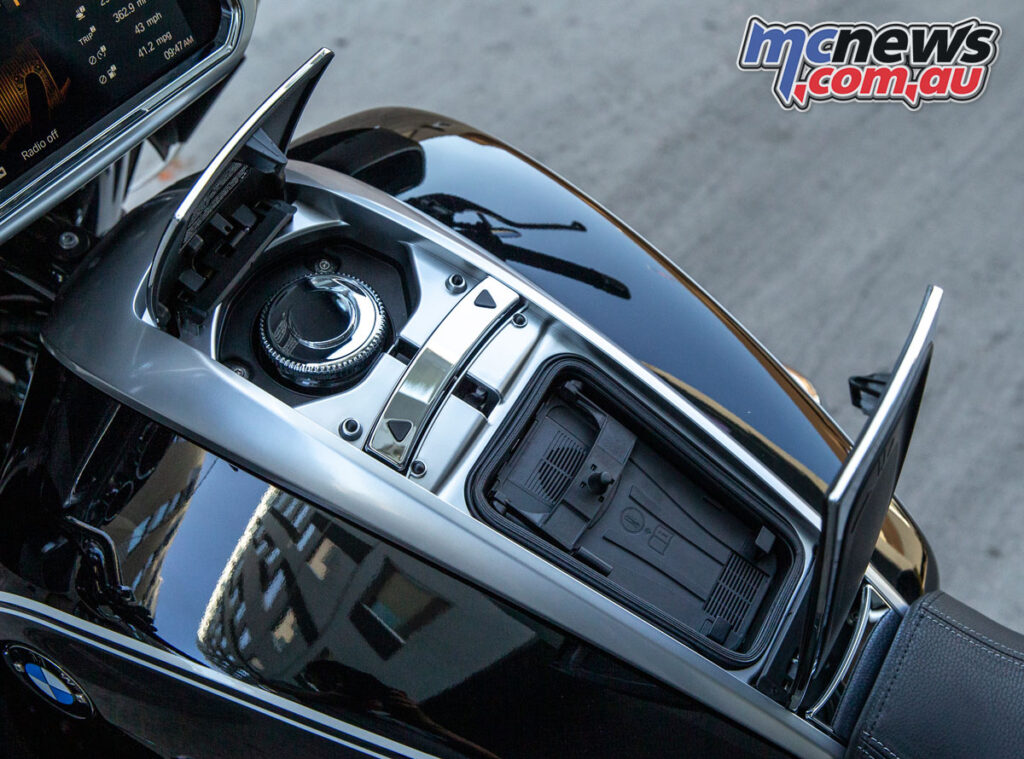
Atop the tank sits a compartment for your phone with a USB-C port and internal fans to keep everything cool. The issue is unless your charging connection is 90-degrees to your phone, you need to flip your phone upside down to make it fit. And if you have a larger screen iPhone (like me) or one of the bigger Androids, space is at a premium in this little compartment.
There’s no electronic suspension adjustment on either the Trans or the B, but there is auto-sensing load on the shock so you’ll always have the correct pre-load regardless of if you’re travelling solo or you’re two-up with luggage.
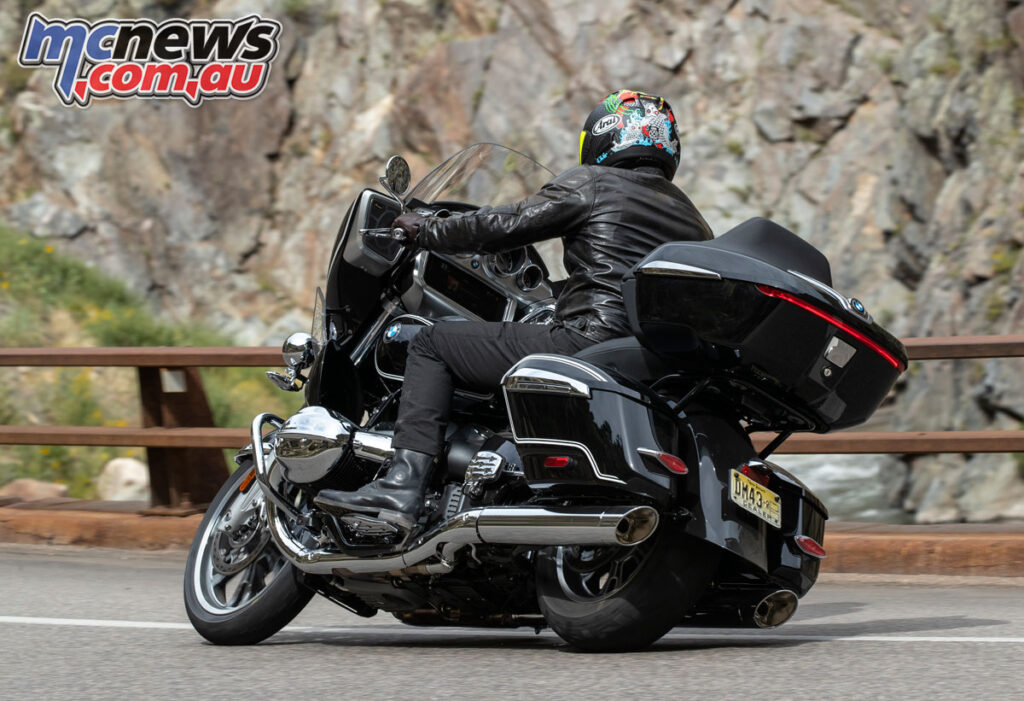
Despite the weight, especially in Trans form, the ride is delightfully smooth. In a way the extra weight helps plant the Trans on the road, and once you learn to flow with the motorcycle, you’re in for a good time.
This is not a machine to bully around. It’s a massive hunk of steel and alloy underneath you, and there’s only a claimed 34-degrees of ground clearance at your disposal so it’s best to play nice.
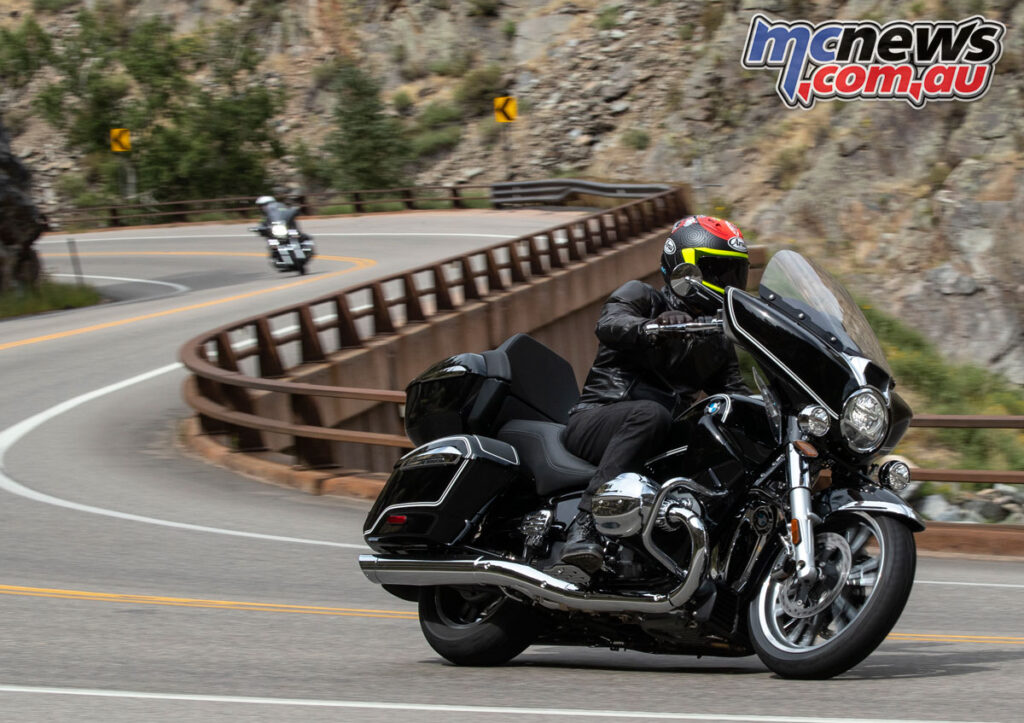
It gets a little easier on the B, given less weight and the fact that the weight is not mounted high up behind you. The B will roll through corners quicker, the reduced frontal area to the Trans giving the B a more nimble presence that mysteriously works its way into the rider’s psyche.
Interestingly, both machines are more nimble than the base model R 18 that came out last year thanks to a revised chassis that has the forks mounted behind the steering wheel. This has in turn sharpened up the geometry, especially giving the B greater agility in the tight stuff without losing any high speed stability.
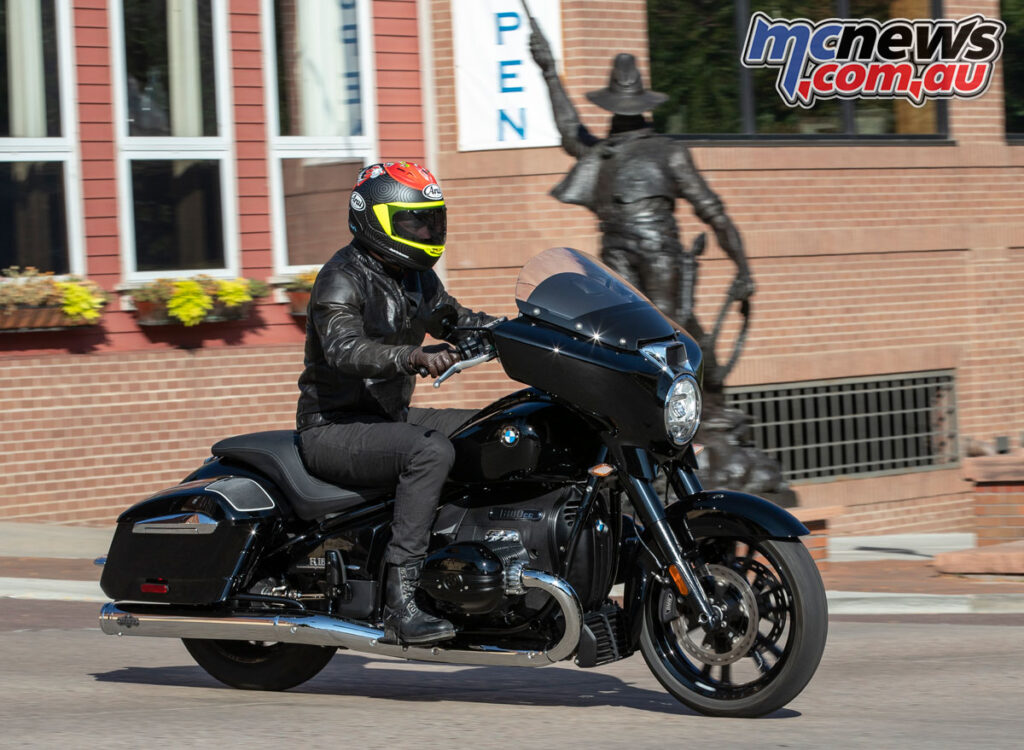
Just as the screen is non-adjustable on the Trans, there’s an equally annoying problem on the B in that the stumpy standard screen’s cut-off sits right in my eye sight line. I’m 183 cm tall, and this was a problem that many taller and shorter riders experienced on this launch.
I either had to squat down or raise my torso above the screen to get a clear view, which became pretty tiresome, to say the least. A simple fix would have been to have a raiseable/lowerable screen, which both bikes should have as standard. I guess it will take some box ticking in the optional accessories catalogue, which is vast, to get something that suits you.
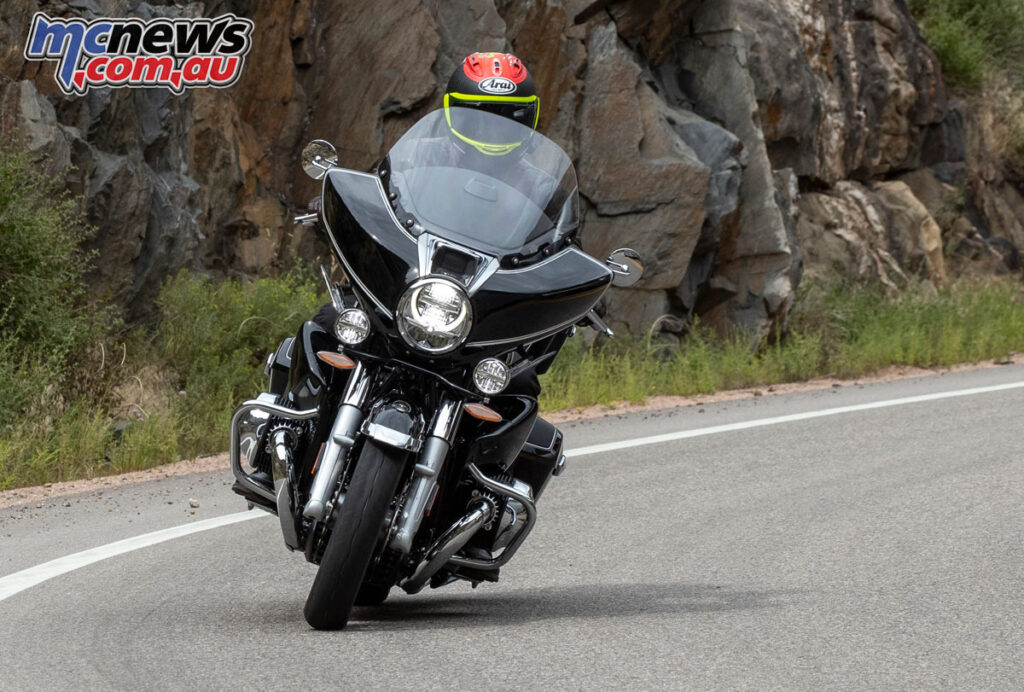
The fit and finish is beautiful on both bikes except for one fatal flaw on the Transcontinental. Both seats (Trans and B) attach at only two points but the Trans’s rocks up and down with about 5 cm of free play. At first I thought it was just my test bike, but then after checking about six other models at the launch, it appears to be the same on all models.
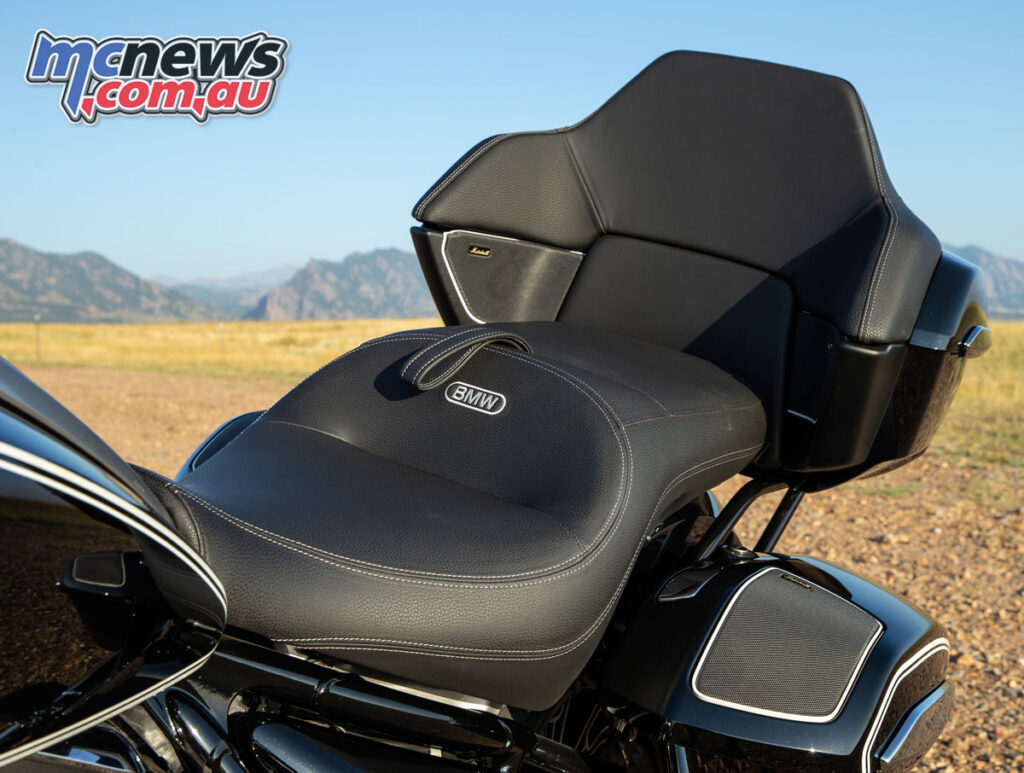
When I then went riding, aware the seat was not as secure as it should be, it immediately became an infuriating problem.
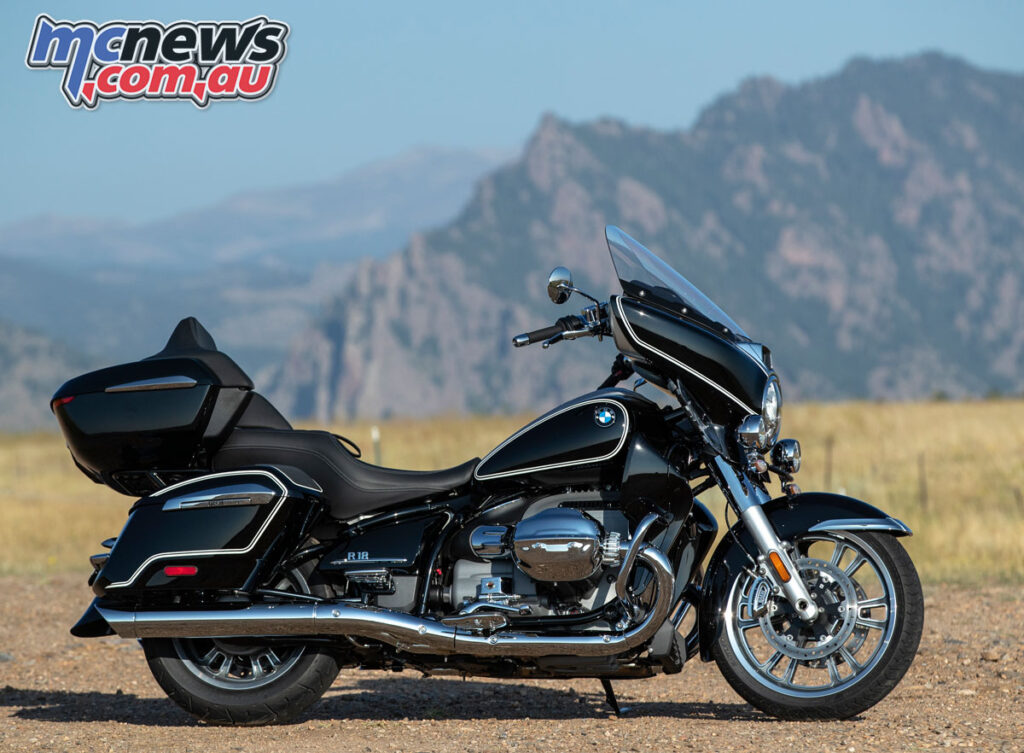
That one point detracted from the fit and finish dramatically, but there’s no denying both machines are beautiful pieces of mechanical artistry. The problem with art is that sometimes function does not follow form.
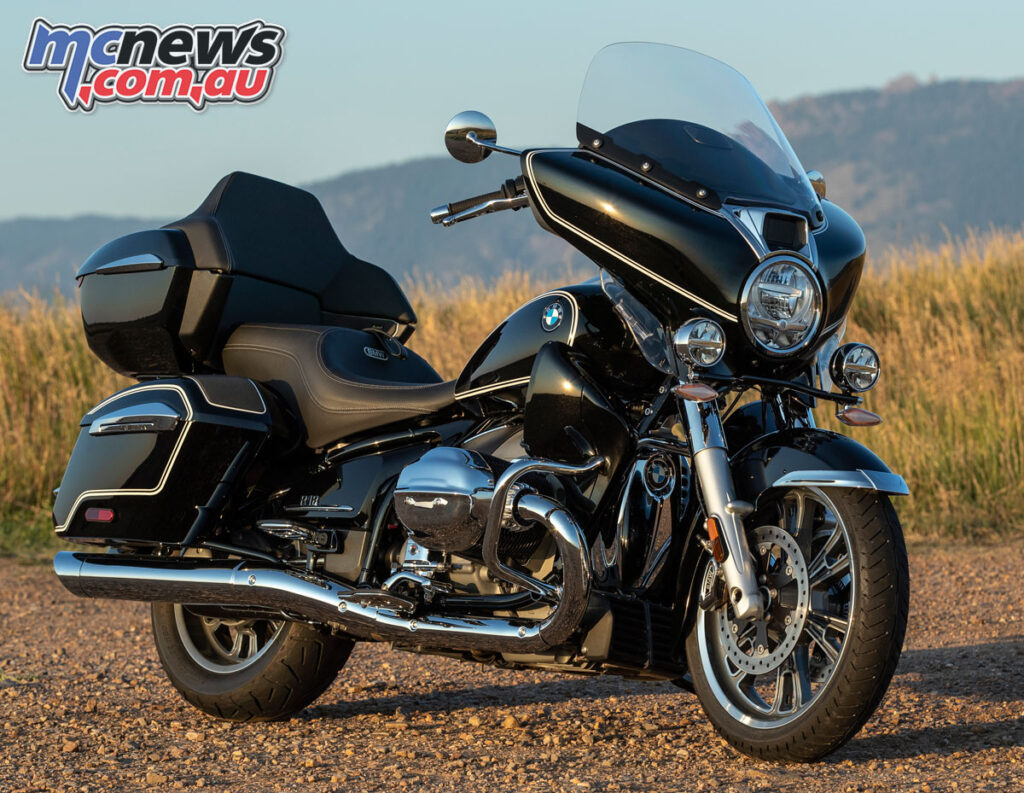
Riders who love this style of machine will be won over from first glance, but there are too many issues for me to recommend the Transcontinental or the B over something like a Honda Gold Wing or a Harley-Davidson Street Glide.
BMW has made an admirable job of going after the American cruising market, but they already owned a decent slice of the touring market with the K 1600 series, and trying to beat H-D at the one game they are seriously good at, heavyweight touring, is a very hard sell.
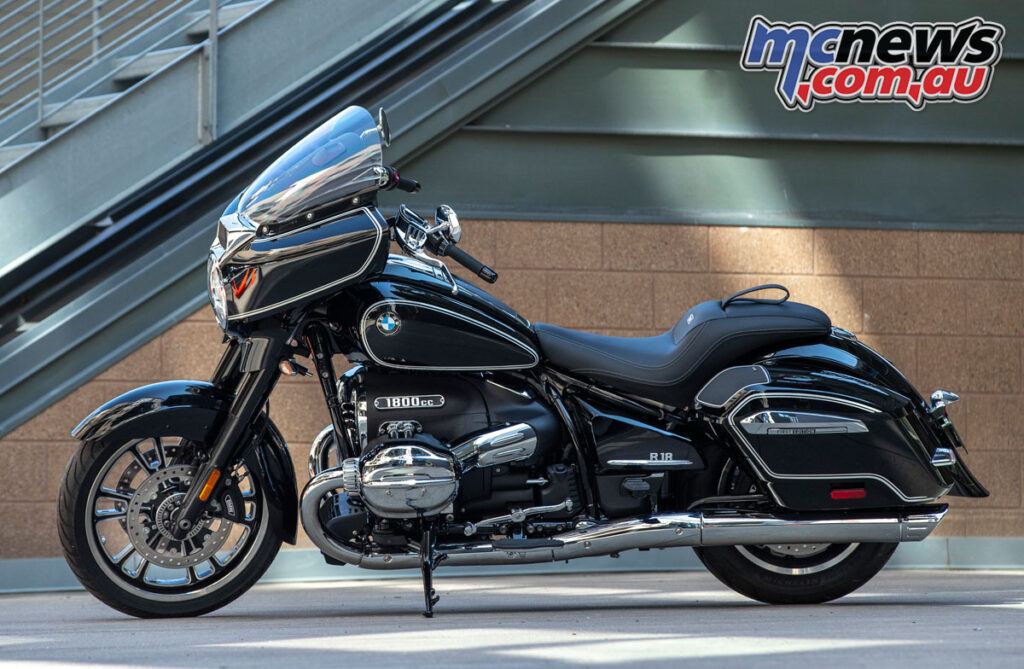
The models are available in Australia priced from $39,310* RRP for R 18 B, and $41,675* RRP for R 18 Transcontinental. *Recommended Retail Pricing and includes GST, but excludes on-road costs.
2021 BMW R 18 B & Transcontinental Specifications
| 2021 BMW R 18 B Specifications | |
| Engine | Air/oil-cooled two-cylinder four-stroke boxer engine, OHV |
| Capacity | 1802 cc / 110 cui |
| Bore/stroke | 107.1 x 100mm |
| Output | 67 kW/91 hp @ 4750 rpm |
| Torque | 158 Nm @ 3000 rpm |
| Compression | 9.6:1 |
| Throttle valves | 48 mm |
| Engine control | BMS-O |
| Emission control | Closed-loop 3-way catalytic converter, EU5 |
| Electrical system | Alternator W 660 |
| Starter | kW 1.5 |
| Battery | 12V/26AH maintenance-free |
| Headlight | LED low beam (with adaptive turning light with swivel module) |
| Clutch | Hydraulically activated single-plate dry clutch |
| Gearbox | Constant-mesh 6-speed gearbox |
| Primary ratio | 1.16 |
| Transmission ratios | |
| I 2.438 | |
| II 1.696 | |
| III 1.296 | |
| IV 1.065 | |
| V 0.903 | |
| VI 0.784 | |
| Rear wheel drive | Universal shaft |
| Transmission ratio | 3.091 |
| Frame | construction type Steel double-loop tube frame with backbone made of sheet metal formed parts |
| Front suspension | Telescopic fork, stanchion Ø 49 mm |
| Rear wheel | Cantilever |
| Spring travel front/rear | 120/120mm |
| Wheel castor | 183.5 mm |
| Wheelbase | 1695 mm |
| Steering head angle | 62.7° |
| Brakes front | Double disc brake Ø 300 mm |
| Brakes rear | Single-disc brake Ø 300 mm |
| ABS | BMW Motorrad Full Integral ABS |
| Wheels | Light alloy cast wheels, 3.5 x 19in, 5.0 x 16in |
| Tyres | 120/70, 180/65 |
| Total length | 2,560 mm |
| Total width | 1,040 mm |
| Seat height | 720 mm |
| DIN unladen weight | 398 kg |
| Permitted total weight | 630 kg |
| Fuel tank | 24 L |
| Fuel consumption | 5,8L/100 km(WMTC) |
| 0‒100 km/h | 5.5 s |
| Top speed | 180 (160 fully loaded) km/h |
| 2021 BMW R 18 B Specifications | |
| Engine | Air/oil-cooled two-cylinder four-stroke boxer engine, OHV |
| Capacity | 1802 cc / 110 cui |
| Bore/stroke | 107.1 x 100mm |
| Output | 67 kW/91 hp @ 4750 rpm |
| Torque | 158 Nm @ 3000 rpm |
| Compression | 9.6:1 |
| Throttle valves | 48 mm |
| Engine control | BMS-O |
| Emission control | Closed-loop 3-way catalytic converter, EU5 |
| Electrical system | Alternator W 660 |
| Starter | kW 1.5 |
| Battery | 12V/26AH maintenance-free |
| Headlight | LED low beam (with adaptive turning light with swivel module) |
| Clutch | Hydraulically activated single-plate dry clutch |
| Gearbox | Constant-mesh 6-speed gearbox |
| Primary ratio | 1.16 |
| Transmission ratios | |
| I 2.438 | |
| II 1.696 | |
| III 1.296 | |
| IV 1.065 | |
| V 0.903 | |
| VI 0.784 | |
| Rear wheel drive | Universal shaft |
| Transmission ratio | 3.091 |
| Frame | construction type Steel double-loop tube frame with backbone made of sheet metal formed parts |
| Front suspension | Telescopic fork, stanchion Ø 49 mm |
| Rear wheel | Cantilever |
| Spring travel front/rear | 120/120mm |
| Wheel castor | 183.5 mm |
| Wheelbase | 1695 mm |
| Steering head angle | 62.7° |
| Brakes front | Double disc brake Ø 300 mm |
| Brakes rear | Single-disc brake Ø 300 mm |
| ABS | BMW Motorrad Full Integral ABS |
| Wheels | Light alloy cast wheels, 3.5 x 19in, 5.0 x 16in |
| Tyres | 120/70, 180/65 |
| Total length | 2,640 mm |
| Total width | 1,040 mm |
| Seat height | 740 mm |
| DIN unladen weight | 427 kg |
| Permitted total weight | 630 kg |
| Fuel tank | 24 L |
| Fuel consumption | 5,8L/100 km(WMTC) |
| 0‒100 km/h | 6.0 s |
| Top speed | 180 (160 fully loaded) km/h |
Source: MCNews.com.au
